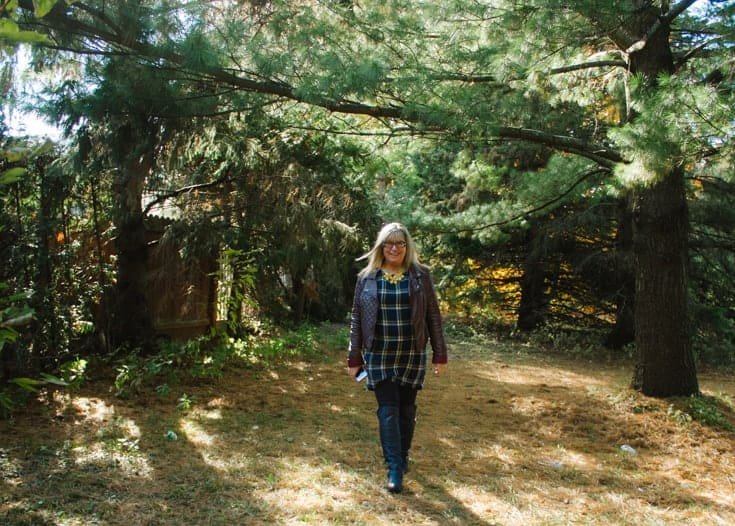
How to Embrace Doing Nothing: A Guide to Mindful Stillness
In today’s fast-paced world, it’s easy to get caught up in a cycle of constant busyness and forget the importance of taking time to do nothing.
Embracing the art of doing nothing, or “Niksen” as the Dutch call it, can have tremendous benefits for your mental health, creativity, and overall well-being.
Learning how to incorporate moments of idleness into your routine can lead to a more balanced, mindful, and satisfying lifestyle.
To start embracing the practice of doing nothing, it’s essential to free yourself from guilt and societal expectations that might make you feel unproductive or lazy.
Understand that taking time for idleness can actually make you more effective and creative in the long run.
Begin by setting aside short periods of time where you can disconnect from your usual tasks and let your mind wander, allowing yourself to experience true relaxation and mental freedom.
Some easy ways to introduce moments of idleness include going for a leisurely walk, listening to music, or simply sitting in a chair and allowing your thoughts to drift.
As you begin to incorporate intentional periods of doing nothing into your daily life, you will likely notice a decrease in stress levels and an increase in personal satisfaction and overall well-being.

Understanding the Concept of Doing Nothing
Doing nothing, also known as niksen, is a Dutch concept that encourages embracing idleness and a pause in our busy lives.
The idea is to consciously take a break from the hustle and bustle and allow yourself to experience moments of absolute idleness.
This practice goes beyond laziness or procrastination, as it is an intentional act of self-care.
There are several ways to immerse yourself in the art of doing nothing.
You can spend time just staring out the window, daydreaming, or sitting on a park bench, observing nature.
Incorporating these moments of idleness in your daily life is essential to maintain a balance between productivity and relaxation.
Here are some benefits of embracing doing nothing:
- Creativity: According to a study, doing nothing can energize your creative mind and stimulate fresh ideas.
- Relaxation: By intentionally stepping away from daily tasks and stressors, you give your mind and body the chance to unwind and recharge.
- Mindfulness: Through practicing the art of idleness, you learn to be present and appreciate the current moment.
To put this concept into practice, try to set aside some time each day or week specifically for doing nothing.
You may need to experiment with different environments or activities to discover what works best for you.
Remember, the key to successfully embracing the concept of doing nothing is consistency and intentionality.

Benefits and Challenges of Embracing Nothingness
Embracing nothingness can lead to a variety of benefits and challenges in your life.
It’s important to understand these aspects to effectively incorporate periods of doing nothing into your daily routine.
Benefits
- Increased Productivity: Allowing yourself moments of doing nothing can actually improve your overall productivity. The mind gets an opportunity to rest, recharge, and refocus.
- Boosted Happiness: Studies have shown that incorporating periods of “niksen” or doing nothing, contributes to the happiness of the Dutch people, who are often ranked among the happiest in the world.
- Reduced Guilt: Learning to let go and embrace nothingness helps you overcome the guilt associated with not doing something every moment of the day. Recognize that it’s okay to have downtime.
- Managing Boredom: Surprisingly, boredom has benefits, such as encouraging creativity and new interests.
Challenges
- Discomfort: The initial stages of embracing nothingness might lead to feelings of discomfort or restlessness, as it’s a departure from our constant need for achievement.
- Fear of Missing Out: Pausing to do nothing might make you feel as though you’re missing out on opportunities or falling behind, especially when surrounded by a society that prioritizes constant activity and accomplishments.
- Downsides of Inactivity: Prolonged periods of doing nothing might lead to stagnation or a decline in mental and physical health. Balance is crucial.
- Life Satisfaction: While doing nothing can benefit your overall well-being, it’s important to also have a sense of fulfillment and achievement to maintain life satisfaction.
By understanding the benefits and challenges of embracing nothingness, you can better incorporate it into your life, ultimately improving your productivity, happiness, and overall well-being.

How Does Embracing Doing Nothing Contribute to Mental Well-Being?
Embracing the practice of doing nothing can greatly benefit your mental well-being in various ways.
By occasionally stepping back from your daily routines and responsibilities, you give yourself the opportunity to recharge and rejuvenate.
One key aspect of doing nothing is the relief it provides from mental and physical stress.
In today’s fast-paced world, constantly juggling tasks can lead to burnout and anxiety.
Allowing yourself to do nothing helps alleviate that stress by giving your brain and body a much-needed break.
During moments of inactivity, your mind can naturally wander.
This state, called the Default Mode Network, results in increased creative thinking and problem-solving.
Embracing doing nothing can lead you to discover new ideas and solutions to everyday challenges.
Here are a few practical ways to incorporate doing nothing into your life:
- Set aside dedicated “do nothing” time: Schedule regular intervals for yourself to unwind and do nothing. This could be a daily 15-minute break or a full day off each week.
- Engage in mindfulness: Practicing mindfulness, such as meditation, deep breathing, and yoga, helps you better embrace inactivity and improve mental well-being.
- Disconnect: Occasionally disconnect from technology, including your phone and other devices, to help you immerse in moments of stillness.
As you work on embracing doing nothing, you’ll likely notice improvements in your mental well-being, including decreased stress, increased creativity, and better overall life satisfaction. So go ahead and give yourself permission to do nothing. Your mind will thank you.

Incorporating Time to Do Nothing into Your Lifestyle
Embracing the art of doing nothing can lead to increased mindfulness, relaxation, and improved mental health.
To incorporate this practice into your daily routine, consider the following tips that focus on various aspects of leisure:
- Connect with nature: Spend time outside and appreciate the natural beauty around you. Whether it’s a walk in the park or sitting in your backyard, connecting with nature helps you recharge and clear your mind. Dutch concept of Niksen encourages such activities.
- Daydream: Give yourself permission to daydream without guilt. Allowing your mind to wander can boost creativity and provide much-needed downtime.
- Consciously choose leisure activities: Schedule regular relaxation and leisure activities to balance your to-do list with enjoyable pursuits. Allocate time for hobbies, meditating, or simply lounging around.
- Practice mindfulness: Incorporating mindfulness into your routine can enhance relaxation and presence. Try deep-breathing exercises or brief meditations during moments of stillness to nurture your mind and body.
- Don’t be afraid of downtime: The world often values productivity, but paradoxically, giving yourself some downtime can contribute to enhanced creativity and overall well-being. Find ways to appreciate doing nothing rather than fearing it.
Remember, the key is to embrace doing nothing without feeling guilty or unproductive.
By allowing yourself time to recharge and relax, you will ultimately build a more fulfilling and balanced life.
The Role of Modern Society and Technology
In today’s fast-paced world, it’s easy to get caught up in a whirlwind of tasks, responsibilities, and goals.
This often leaves little time for truly embracing the art of doing nothing.
However, understanding the role of modern society and technology can help you better navigate this challenge.
For instance, as financial news often reports, the global economy can be quite volatile, making it challenging for investment firms and individuals alike to predict the future.
In the midst of this uncertainty, it’s crucial to step back and allow yourself moments of reflection and relaxation.
Technology has been a significant catalyst for the rapid changes experienced in our lives, with both positive and negative impacts.
On one hand, technology has made it possible for people to connect, collaborate, and access countless resources at the click of a button.
However, as highlighted by Forbes, technology’s constant evolution can be overwhelming and exert even more pressure on individuals to keep up.
To cope with these challenges, consider the following strategies:
- Set boundaries: Establish designated times during which you disconnect from technology, allowing yourself an opportunity to recharge.
- Be mindful of your consumption: Acknowledge the amount of information you’re absorbing and make a conscious effort to diversify or limit your intake.
- Embrace nature: Make time for outdoor activities such as walks, hikes, or simply sitting in parks, as this can help ground you in the present moment.
Referencing the recent pandemic, many people experienced significant changes to their daily lives and routines.
This period showed the importance of adaptability, not only for businesses but also for individuals.
CEOs, like Andrew Formica of Jupiter Fund Management, had to make quick decisions and adopt new working methods to ensure their companies’ survival.
Amidst all these rapid changes, it’s vital to maintain a sense of balance and prioritize self-care.
By applying these strategies, you can foster a healthier relationship with technology and better navigate the complexities of modern society while embracing the art of doing nothing.

Frequently Asked Questions
What are the benefits of embracing idleness?
Embracing idleness can have numerous benefits for your mental and physical well-being.
Taking time to do nothing allows your mind to recharge and promotes creativity.
The power of strategic nothingness can help improve focus and attention, leading to increased productivity when you return to your tasks.
In addition, practicing the art of doing nothing can help reduce stress and anxiety, leading to an overall healthier and more balanced life.
How can I cultivate the art of doing nothing?
Cultivating the art of doing nothing requires intention and practice. Begin by setting aside time each day to truly relax and step away from your daily responsibilities.
This could involve sitting quietly without distractions, going for a leisurely walk, or engaging in a mindful activity that doesn’t require mental effort.
Be aware of the pressure to fill every moment with productivity – give yourself permission to simply be still and let your thoughts wander.
The Blissful Mind suggests embracing the “float state,” which is about letting yourself be still – mentally and physically – without pressuring yourself to do anything.
What are some ways to practice the act of nothingness?
There are several ways to practice the act of nothingness.
One option is to engage in activities that allow your mind to wander, such as taking a leisurely stroll in nature, lying in a hammock, or watching clouds pass by.
You could also embrace mindfulness and meditation, techniques that encourage a non-judgmental awareness of your thoughts, feelings, and surroundings.
Another approach is to establish a “do nothing” routine or day, where you consciously avoid filling your schedule with tasks, meetings, or obligations – giving yourself the time and space to truly disconnect and recharge.
In Conclusion – Final Last Words
By now, you have gained valuable insights into embracing the concept of doing nothing.
It is essential to understand that this doesn’t mean being lazy; rather, it’s a constructive habit that can significantly improve your mental well-being.
By incorporating “niksen” (Dutch art of doing nothing) into your daily life, you can recharge your mental and emotional batteries, as well as boost your creativity and productivity.
There are several ways to cherish the moments of doing nothing:
- Allow your mind to wander: Set aside dedicated time for daydreaming and letting your thoughts drift.
- Be mindful: Embrace the art of mindfulness by fully focusing on simple tasks such as walking or enjoying a meal.
- Disconnect: Make an effort to unplug from technology, social media, and other distractions.
- Embrace nature: Spending time in nature, whether that’s a park or a nearby forest, can help you appreciate doing nothing.
- Schedule downtime: Mark your calendar for regular periods of no activity – and stick to it.
Remember, embracing the power of doing nothing allows your mind to decompress, giving yourself the opportunity to think, reflect, and recharge.
Make it a part of your life and remain committed to practicing it consistently.
As you cultivate this habit, you’ll soon realize the numerous benefits of doing nothing and start enjoying a more balanced and productive life.
Incorporating this practice into your daily routine may feel challenging at first, but being consistent and making a conscious effort will yield positive results.
Keep in mind that it’s not a waste of time; it is an investment in your overall well-being.
So, take the first step today, and discover the transformative potential of doing nothing.





